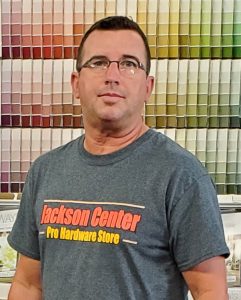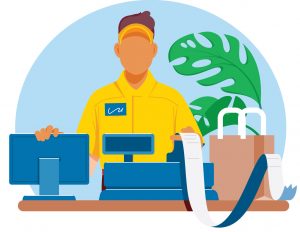Trial lawyers need to interview people on all sides of the case so they’re not surprised when they’re defending their client in the courtroom.
That’s the approach Deron Yingst, co-owner of Jackson Center PRO Hardware in Jackson Center, Ohio, takes with pricing. It’s easy for him to defend his price to an inquiring customer because he visits his competitors weekly, analyzes their pricing and product selection and uses that research to refine his own retail strategy. As a result, he’s gained a reputation as a price leader. Overall sales have increased more than 300 percent since he and a business partner bought the store two years ago.
Price shopping is an important part of any retailer’s competitive strategy. While wholesalers generate price lists that keep prices within a certain range of nearby competitors, many retailers, like Yingst, supplement those price lists with their own legwork.
By visiting a competitor’s operation, you can also learn a lot about product selection and merchandising. While you may spend less time browsing through a store these days because of pandemic safety measures, consider making regular visits to nearby competitors part of your weekly routine. Here are six ways Yingst says you can get the most out of price shopping.
01. Research new product lines.
If you are adding a new product line, part of your market research should involve seeing what similar products other businesses in
your area are stocking. For example, when Yingst decided to start selling flooring this past year, he devoted time to look at his principal competitor’s flooring department. He was not only interested in the price, but also in the quality of products they stocked. He chose to stock a higher grade of flooring, and because he had spent time in his competitor’s store taking notes on specific product lines, he was armed with the facts. He could explain in detail how his prices and quality of products compared to his competitors. Customers tend to be more satisfied when they have a better understanding of the product they are buying, Yingst says.
02. Make price shopping a habit.
Consistency is important to an effective price-shopping strategy. Your competitors frequently change promotional items and merchandising. If you are in their store on a regular basis, then you know what’s new, what your customers are seeing and what prices are catching their attention. Yingst visits his competitors’ stores and websites weekly. Between looking at ads online and in-person visits, he spends anywhere from four to 10 hours a week price shopping. How much time he spends depends on his goal for that particular visit.
 03. Evaluate their product selection.
03. Evaluate their product selection.
Yingst is just as interested in his competitor’s inventory as he is in their prices. Since he is in the same market, he can take their product mix as a good indication of what he should and shouldn’t stock. A trip to a competitor can help you determine your points of differentiation, whether that be in specific product lines, categories or services they offer. “I always look for what isn’t selling as much as what is selling well,” he says.
“I look for full peg hooks that don’t look like they’ve moved in a while. If it doesn’t look like they’re selling something, then that could be an indication I don’t want to start selling that product either.”
In the same way, he looks for products he isn’t stocking but maybe should be. Sometimes, he will walk through an entire department of another store and take notes about new items and what might be missing from his own lineup.
“Use the big-box stores for clues to what you should carry. You can learn a lot from them,” he says. “They have spent a lot of money to figure out what to carry and how to merchandise it. I learn as much as I can from them and use that to determine what’s best for my business.”

Why Low Prices Work for Jackson Center PRO
Price shopping alone isn’t the magic bullet that will give you the edge over your competition. It must be accompanied by other operational efficiencies that will support your pricing structure.
Yingst has made sure he’s running a tight operation so he’s prepared to take on his competitors’ prices, especially since his pricing strategy cuts against conventional wisdom. Rather than assuming shoppers are willing to pay slightly more for the service and convenience he offers, he’s not afraid to match or even undercut big-box prices when necessary.
“Shoppers are not going to always pay a higher price for convenience,” he says. “They may be loyal to you to a certain extent, but if they think your prices are too high, they will go somewhere else.”
Yingst might be best known for his automatic 11 percent discount on all purchases, a direct response to Menards’ 11 percent rebate. He advertises his line of solid wood cabinets at 50 percent below what Menards charges. He says custom cabinetry is an item where his big-box competitors charge a premium. By undercutting their prices on cabinets, he can boost his price image and build a larger sale around a kitchen remodel. He uses frequent Facebook posts and in-store advertising to proclaim his low-price message.
“If you do your homework and learn your competitors’ strategies, then you will be able to compete with them.”
One of the main reasons Yingst can afford to take a lower margin is that he owns his building and operates with very little debt. But just as important is his tight control on inventory. While he does take advantage of dating offers from his two primary wholesalers, he also pays cash as often as possible. He relies on frequent deliveries to keep his store supplied, rather than let money sit on the shelf for weeks before an item sells. He also regularly purges dead items so he’s only keeping items he knows will sell.
“Not having a lot of debt in inventory has been a huge advantage for us,” he says. “If we just used a revolving account with our wholesaler, we would be tempted to buy more than we need, rather than having cash available for other items. Having inventory paid for is key to being able to keep prices low, too.”
Customer service and selection are important too. Yingst aims to have a wide enough inventory to complete major projects, such as a kitchen remodel. His selection includes a full line of hardware, cabinets, flooring and even some lumber.
“I think one of the biggest mistakes retailers make is to think they can’t compete just because they are smaller,” he says. “If you have the attitude that you can’t compete, then you aren’t going to win. But if you do your homework and learn your competitors’ strategies, then you will be able to compete with them.”
04. See what the ads won’t tell you.
Using only the internet and circulars to price shop has its limits. There may be items listed for sale in the store that are not listed in a circular. Visit stores so you can also see what products other retailers are promoting through their merchandising. What items are featured on endcaps and in the power aisle? How are they promoting impulse items? What appear to be their strongest categories according to placement on the salesfloor? Even if products in those areas aren’t on sale, customers are likely to notice their prices and so should you. Those high-visibility items may become points of comparison for customers if they do their own price shopping.
 05. Improve your own customer service.
05. Improve your own customer service.
Sometimes offering the best service to a customer means being honest with them about what the big boxes are carrying. If a customer is looking for an item he doesn’t have and can’t get via special order in time, Yingst can tell his customer not only which nearby store stocks it, but also which business is likely to have the lowest price. “Even if for that one time you are sending them to the competitor, they are not going to remember where they went as much as they are going to remember who sent them there, and they will come back to you,” he says.
06. Remember the add-on sales.
Price shopping is typically focused on comparing price-sensitive items so your business can stay competitive. Each retailer will have their own threshold of how low they are willing to go to match price. Yingst is willing to tread at or below his cost for certain items if it means winning the sale. That’s because he’s well prepared to create the add-on sales that will earn his margin.
“You need to do more than just have a good price; you have to make those add-on sales and make your margin.”
Effective merchandising, educated employees and a complete selection all contribute to add-on sales. Each of those elements should be strong in your store before you start to lowball prices. The ability to drive add-on sales could be your advantage over other retailers.
“Add-on items are where the big boxes often slack,” Yingst says. “They don’t always train their people to make sure shoppers have all of the accessories when they leave. You need to do more than just have a good price; you have to make those add-on sales and make your margin.”
 Hardware Retailing The Industry's Source for Insights and Information
Hardware Retailing The Industry's Source for Insights and Information









